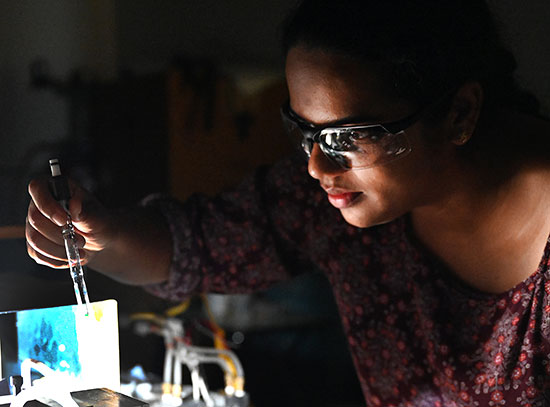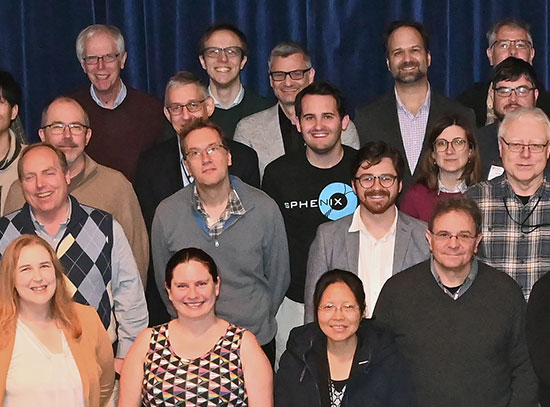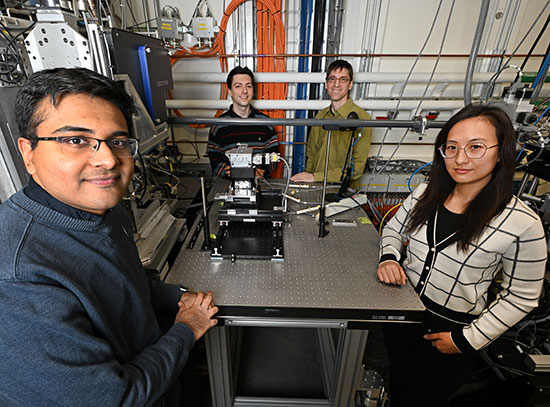A Fresh Pair of Eyes On an Old Nuclear Physics Problem
Brookhaven Lab Intern Pedro Rodríguez is working on simplifying a problem in nuclear physics that's over a half-century old
May 20, 2020
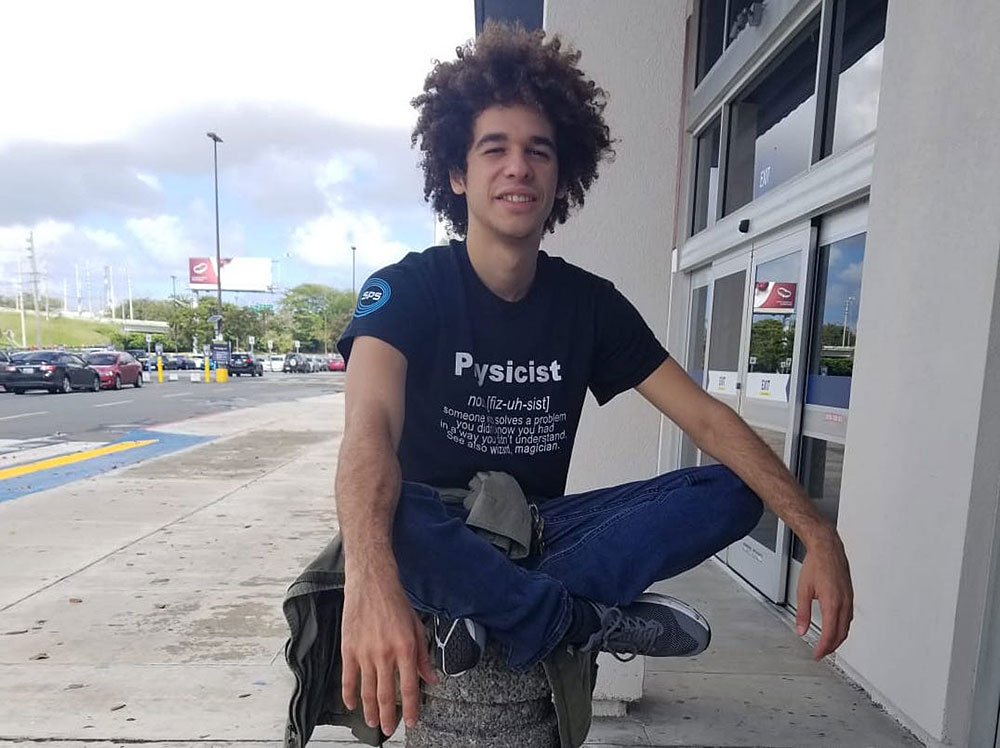 enlarge
enlarge
Pedro Rodríguez has wanted to be a physicist from a young age. He's helping to develop a new way to calculate neutron cross sections—a mathematical concept that determines whether a nuclear chain reaction will take place to keep power reactors running. Photo courtesy of Pedro Rodríguez
As an intern for the National Nuclear Data Center (NNDC) at the U.S. Department of Energy’s (DOE) Brookhaven National Laboratory, Pedro Rodríguez is working to resolve a 70-year-old problem in nuclear physics. He and his mentor, David Brown, who manages a library of nuclear data files at the NNDC, are figuring out a way to simplify one of the steps for ensuring nuclear reactors can be modeled correctly.
The project, made possible by DOE’s Science Undergraduate Laboratory Internship (SULI) program and administered at Brookhaven by the Office of Educational Programs (OEP), starts with the idea that a nuclear reactor is driven by the splitting of atoms, a process called fission. A neutron, a subatomic particle without an electric charge, is fired at an atom, which splits the atom into two smaller atoms and some leftover neutrons. Some of those neutrons then hit other atoms, causing them to fission too, releasing more neutrons, which split more atoms, and so on. This is called a nuclear chain reaction.
For scientists to know whether a chain reaction will occur under a reactor’s normal operating conditions, they must calculate the area of the neutron “cross section.” If a bombarding neutron hits a circular area of this size centered on the target nucleus, this fission occurs and the chain reaction can continue. If it misses the area, the chain reaction can fizzle out.
“Imagine shooting a neutron as if it was a dart at a dartboard,” Brown said. The “cross section,” or probability, of a dart hitting a circular dart board is proportional to the area of the dart board.
In nuclear physics, the probability of a neutron “hitting” a target nucleus and interacting with it can be described by a mathematical representation of the target’s cross section.
Such mathematical cross sections are the meeting ground between theory and experiment. The calculations take into consideration certain conditions—for example, the energy of the incoming neutron, the angle of scattered neutron—and can be compared with measurements made in the laboratory to evaluate the accuracy of the underlying theory.
The path we're taking, it is kind of new.
— Pedro Rodríguez
The largest reaction cross sections are usually found at distinctive neutron energies that result in states that have relatively long lifetimes when a neutron is first absorbed by a nucleus. The energies that form such a “compound nucleus” are known as nuclear resonances.
“When you hit one of these resonances, the effective target area of the nucleus jumps dramatically,” Brown said, and increases the likelihood of starting a chain reaction. “So, we want to know where these resonances are.” Knowing where the resonances are helps to more easily predict and control nuclear reactors.
By using statistical behavior provided by nuclear theory to analyze the neutron resonance energies, Brown and Rodríguez can determine neutron reaction cross sections more easily.
“If you don't get those numbers correct, you don't get the shape of the cross section right as a function of energy, and you can't model your reactor right,” Brown said.
Rodríguez has always had a love for learning new things, particularly in the field of physics.
“I just like sitting down and solving these types of problems, like an artist likes to sit down and paint,” he said.
“Like sorting marbles into buckets”
Sometimes the shape of resonances cannot be determined, so the cross section cannot be accurately modeled. But much can still be learned about the resonances from a statistical analysis of their energies. Rodríguez has been trying to take advantage of this approach through machine learning techniques and what is called random matrix theory.
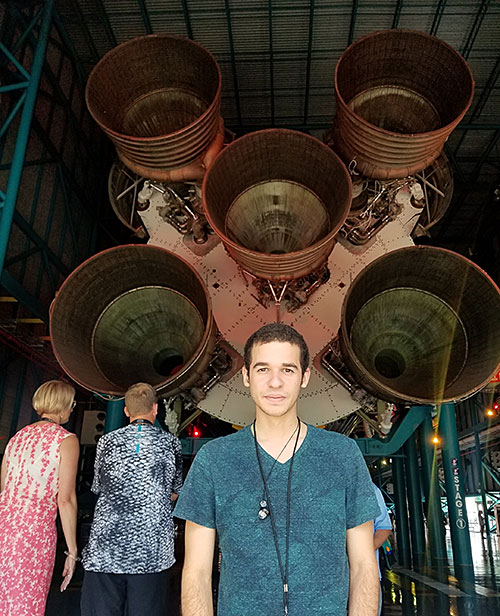 enlarge
enlarge
Rodríguez at the tail end of a rocket at the NASA Kennedy Space Center. Photo courtesy of Pedro Rodríguez
Starting with the range of energy resonances from the isotope he wants to study, he sorts them by assigning a combination of quantum numbers to each. This can be compared to sorting marbles in buckets, Rodríguez and Brown said, because these resonances fall in groups.
“Let's imagine there are red, blue, and green marbles in a bag,” Rodríguez said. “You have to sort the marbles into buckets by color, and you’re not allowed to look. All you can do is see what the average color of each bucket is when you put all the marbles in together. So, at first, you end up with three buckets that, from a distance, look brown because all the colors are mixed.”
These mixtures are like the resonances being random or incorrect quantum number assignments.
“But now we can take out one marble and put it in one of the other buckets, and then see if the average color of that bucket changed,” Brown said. “Again, we're only allowed to look at the average color of each bucket.”
“Then we start reclassifying those marbles, or energy resonances, using the statistics provided by the theory. We keep repeating this until we get a blue bucket, a green bucket, and a red bucket” –a clear separation of the resonances, Rodríguez said.
Solving a problem, a half-century-old
Rodríguez has been focusing on uranium-238 because of the large amount of data that’s available for this isotope.
According to Brown, people have been trying to understand this particular nucleus for 70 years.
Despite the fact that nuclear reactors powered by U-238 work, assigning correct quantum numbers to sequences of resonances is still somewhat slow.
The method of using random matrix theory to assign neutron resonances may help improve the process.
“It's kind of amazing that with the right statistical mindset, we can do this so quickly and so easily,” Brown said
“From what David told me,” Rodríguez added, “no one has tried this stuff before—the path we're taking, it is kind of new.”
“Having the fresh eyes on the problem brings a lot of energy and it brings new ideas,” Brown added. “And honestly, Pedro's poking around in ways that I didn't think to poke around, and it has definitely helped dramatically.”
Rodríguez, who decided he wanted to study physics at a young age, will graduate next spring with his bachelor’s degree in theoretical physics from the University of Puerto Rico Mayagüez Campus. After graduation, he wants to pursue a Ph.D. in experimental physics but has not decided on a university yet.
Brookhaven National Laboratory is supported by the U.S. Department of Energy’s Office of Science. The Office of Science is the single largest supporter of basic research in the physical sciences in the United States and is working to address some of the most pressing challenges of our time. For more information, visit https://energy.gov/science.
Follow @BrookhavenLab on Twitter or find us on Facebook.
2020-17193 | INT/EXT | Newsroom




